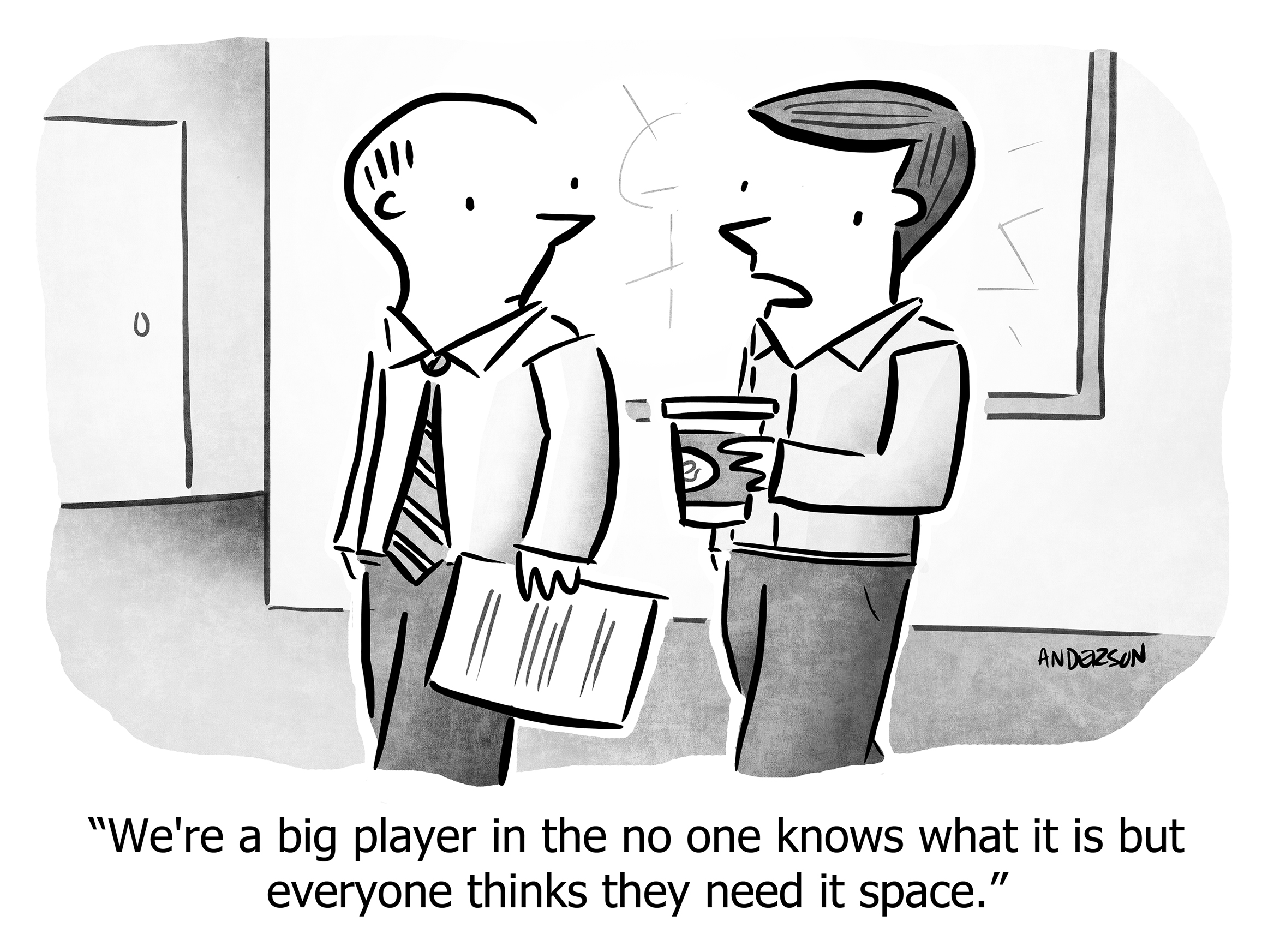You’re a little company, now act like one
I talk to a lot of companies that are still hunting for customer #1, or a few sales have been made but the ball isn’t rolling yet.
Most of them are making the same mistake: Their public persona is exactly wrong.
I know, because I made the same mistake! But I learned my lesson, and I’d like to share it with you.

Nobody’s this happy about installing new software.
Even before I had a single customer, I “knew” it was important to look professional. My website would need to look and feel like a “real company.” I need culture-neutral language complementing culturally-diverse clip-art photos of frighteningly chipper co-workers huddled around a laptop, awash in the thrill of configuring a JDBC connection to SQL Server 2008.
It also means adopting typical “marketing-speak,” so my “About Us” page started with:
Smart Bear is the leading provider of enterprise version control data-mining tools. Companies world-wide use Smart Bear’s Code Historian software for risk-analysis, root-cause discovery, and software development decision-support.
“Leading provider?” “Data mining?” I’m not even sure what that means. But you have to give me credit for an impressive quantity of hyphens.
That’s what you’re supposed to do right? That’s what other companies do, so it must be right. Who am I to break with tradition? Surely my potential customers would immediately close the browser if they read:
Hi, I’m Jason and I built an inexpensive tool for visualizing what’s in your version control system. It’s useful for answering questions like “When was the last time we changed this file?” Check it out and tell me what sucks!
I mean, can you just imagine a person with “Software Engineer III” on their business card taking me seriously if I talked like a human being? What if someone gets offended by the word “sucks?” No no, big companies want to see professional language!
But I was wrong. I’ll explain why from the point of view of selling software over the web, but the same lesson applies to every little company trying to get off the ground.
Now repeat after me:
My next sale won’t be a 1000-seat order from Lockheed Martin.
My next sale won’t be a 1000-seat order from Lockheed Martin.
My next sale won’t be a 1000-seat order from Lockheed Martin.
I’m telling you this having sold software to every size of company from indie hacker to IBM, and, well, to Lockheed Martin.
Your vision is to land $100k deals with big companies—and you will! But not today. Today your product is a shaky version one-dot-oh with bugs you haven’t uncovered yet, missing 90% of the features big companies require, and with no significant documentation like case studies or a proper manual or an ROI model or a large, reference-able customer.
Today, you’re a complete mismatch with Lockheed Martin! But there’s a nice big niche that’s a perfect match: Early Adopters.
Early Adopters are people who want to live on the bleeding edge. They like new technology, even if buggy. They like working with teeny companies where they have a personal relationship with the founders, where they are showered with attention, and where their ideas are implemented before their very eyes. They don’t mind putting up with a hundred bugs so long as they get fixed fast. They want to be involved in the process.
The reason they’re willing to do that, is Early Adopters see new technology as a way for them to beat their competitors. They’re willing to take the risk, if it pays off in features that only they have, or distribution channels they can win in, or some other significant competitive advantage. Most companies aren’t willing to take risks for any reason, so this is a winning strategy for those willing to take risks.
Tom is an Early Adopter. At Smart Bear I must have had ten or twenty of these folks before our product was stable enough and feature-rich enough to start getting attention from bigger companies.
The best part is, this is exactly the moment in your company’s life when you need Early Adopters to help you build the right product! You don’t need people who download, get discouraged, and then never call you back. You need a chatty Cathy who wants to dive in and help out.
In short, you need to tightly define your ICP, because those are the people who love you, for who you are, today, and therefore where you will be successful.
So now back to your website, your blog, your Twitters—your public corporate persona generally. What do you put up on your website that screams out to those potential Early Adopter Cheerleaders that you are exactly what they’re looking for: A cool new company with a fresh product and fresh attitude; a product that might be rough around the edges but is ripe for feedback and collaboration; a company that may be small today but is thinking big.
Well here’s how not to it: Say “a leading provider of” and blather on about how you “Provide the ability to quickly and easily do XYZ so you can go back to accomplishing high-value tasks.”
Puh-leeze. Can you be more uninspiring?
Put yourself in the shoes of that Early Adopter. Does she want to see content-free garbage phrases or does she want to hear about how you totally understand her pain? Should you come off as a big, established, safe company or as a cool, passionate, small team who wants to make a difference? Should you hide behind “Contact Us” forms or display your phone number and Twitter account on your home page? Should you promote features and benefits you don’t really have implemented yet or should you promote your forums, blog, and weekly all-customer virtual meeting where everyone chimes in with feedback?
Say something specific and meaningful. Be human. Be yourself.
Stop hiding.
https://longform.asmartbear.com/little-company/
© 2007-2025 Jason Cohen
 @asmartbear
@asmartbear






